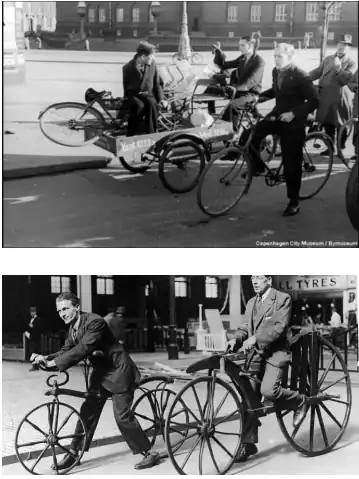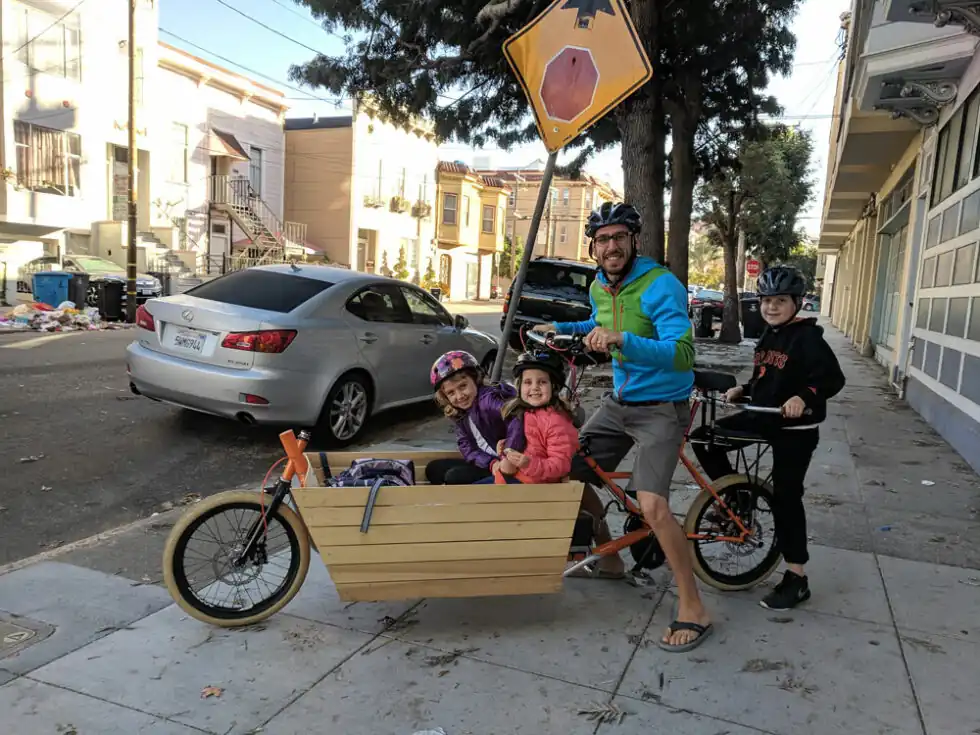No products in the cart
DIY cargo bike: how cargos improve your life & how to build one
Did you know that June 3rd is the World Bicycle Day?
Today, bikes represent an important aspect in the life of many people: a way for clean mobility freedom, a choice for better health and longevity, an activity to spend quality time with their loved ones. Bicycles can also motivate creativity; its perfect mechanism, unique aesthetic and customisable structure have been inspiring manufactures, artists and bike’s lovers worldwide.
Can you guess when they were invented?… Let’s have a quick history class!
Who invented the bike? Historical fun-facts about bikes & cargos
There isn’t a straight answer to who exactly invented the bike but more of a collaboration through the centuries. The father of bicycles is a German baron named Karl Von Drais. In 1817 he created the first two-wheel steerable prototype of a bike. Later on several French inventors developed models with pedals attached to the front wheel.
Looking for improved stability, an oversized front wheel was added later on. Nicknamed “Penny-farthings” or “ordinaries” these eccentric bikes became incredibly trendy during the 1870s and contributed to the rise of competitive races and bike clubs.
Our modern bike
In 1885 the first prototype of our modern bike came to life. Equal sized wheels, a chain drive, brakes and tyres; the “Rover Safety Bicycle” by John Kemp Starly is the embodiment of the contemporary bike.
What about cargo bikes?
In 1877, a three-wheeled bike was created for the transportations of goods and passengers. An early version of the cargo bike was born! Firstly in iron and then with a wood front basket ornate with flowers and iron fittings, the carrier bike also became a piece of art. These rapidly took over the horse cart and deeply transformed society until the arrival of cars.

Copyright: top, Copenhagen City Museum & bottom, History.com
Bicycle as a choice of eco-mobility for sustainable development
An old solution to new challenges: can cargos become the future of mobility?
The advantages of riding bicycles are not limited to our health; it also produces zero emissions, zero noise pollution, smaller road infrastructure, size and cost, accessibility and obviously lessens risk of serious road accidents. Furthermore, they are transforming our ability to use bikes as our main mode of transportation by adding a loading space to carry what we usually do by car.
Choosing green mobility
It doesn’t just mean a lot to the environment but it has a major impact on your quality of life. As we choose to move slow; we choose to appreciate the landscape, the effort put into reaching distances and a tradition that has been part of our culture for centuries.
“A sustainable transport system that promotes economic growth, reduces inequalities while bolstering the fight against climate change” – United Nations
However, it’s important to mention that cargo bikes often come as bulky and expensive options that might not suit the necessities and lifestyles of everyone. That’s where DIY come in handy, as the module can fit onto your current bicycle (=less expensive & produces less waste!) and you can choose the best setup for you. The possibilities are endless!
Creativity: the rise of custom solutions & unique DIY cargo bikes
Trikes, Bakfiets, Boda-boda, Long John, Longtail… Cargo bikes are extremely mouldable & customisable!
More and more people choose to switch to a cargo bike to improve their daily mobility. Whether it’s for carrying kids, heavy charges and/or pets; there’s a vast choice of models designed specifically for different needs.
It’s also not rare to see custom made ones; bike-building has become quite in vogue as the bicycle industry increased in popularity during the pandemic.
The idea of building a bike might sound quite interesting for some people and it’s definitely not a mission impossible; there are plenty of helpful tutorials online & with enough handiness, budget and patience, it can definitely be done.

Copyright: Yaron Milgrom via SF Bike
When designing a cargo module it’s important to keep in mind a few things:
- Will you ride in narrow streets with many cars around? In this case, the smallest the better!
- Are you comfortable riding a classic bike? You could think about adding a third-wheel to ensure a better support of the charges. Beware though, that trikes can be tricky to get used to if they tilt during turns!
- How will you store the bike? Will the bike have to pass through a door?
- Do you plan to drive all the time with charges? If not, you could look into removable cargo modules
Taking into account all these elements will help you to build your cargo bike. Keep in mind though, that DIY-ing at home is quite challenging and dangerous. You must be extra careful if your bike will transport kids and pets.
Welding
Also, welding is often an essential step and it requires a lot of practice. We strongly advise starting out with someone who knows it well and can tutor you. You should start out with Mig/mag welding as it’s the easiest method for beginners. More details about welding.
It’s possible to avoid welding by building the carrier in wood, bamboo or by following special plans made without welding, but the range of options will be more limited.
Turning your current bike into a cargo bike, do it yourself!
Some people venture into making their DIY homemade cargo installation on their beloved bike, as most of the cargo bikes on the market come in a full bike that requires you to ditch your current one. That’s not ideal for everyone! The full-on models are very expensive, heavy and take a lot of storing space. And you might not need to use the extra charging space all the time!
For this reason, we developed a versatile solution to transport charges by bike: a compact accessory that can quickly turn your current bike into a three-wheels cargo bike: the AddBike+.
By removing the front wheel of your bike anyone can effortlessly upgrade their regular bike into a fully functional cargo trike.
Eventually, three different modules were designed to fit onto the AddBike+: the Kid Kit, the Dog Kit and the Box Kit. These kits allow the AddBike+ module to shape into an accessory perfectly adapted for the transportations of kids, pets and heavy charges (up to 35 kg/77 lbs!)
More about the AddBike+
High quality, waterproof, sturdy and ergonomic. Each kit can easily be mounted and dismounted in just a few minutes. This allows you to switch from a functional cargo to your classic bike anytime you want. You just need some basic tools and with the help of our installation guides and tutorials, anyone can do it!
To make it accessible for everyone, we made sure that the system is compatible with most bikes on the market. This means that it can be added on electric bikes, MTB, folding etc… and also that your friends and family can use it too ! To check the compatibility of the AddBike+ check the compatibility chart out.
The perfect DIY cargo bike system designed for and from you!
If buying a full cargo bike isn’t really within your budget and you’re not really up to building one with your own hands, this is definitely an intermediate option that will give you the freedom of an accessory with all the extra space. And it’s tested and approved to ensure full safety of the driver, the passengers and the people around you. Something you might never be fully sure with a self-made prototype!

The AddBike+ is an innovative solution that we have developed to respond as best as possible to our clients’ necessities. With this module, we hope that biking can become more accessible and that we can help contribute into offering a more sustainable choice. We believe that everyone can switch to a cargo bike, without having to compromise or change their current lifestyle!
Do you want to know more about clean mobility and our products? Don’t hesitate to check our website and to contact us! We will be glad to guide you through your journey towards a cleaner future.
Happy cycling!



